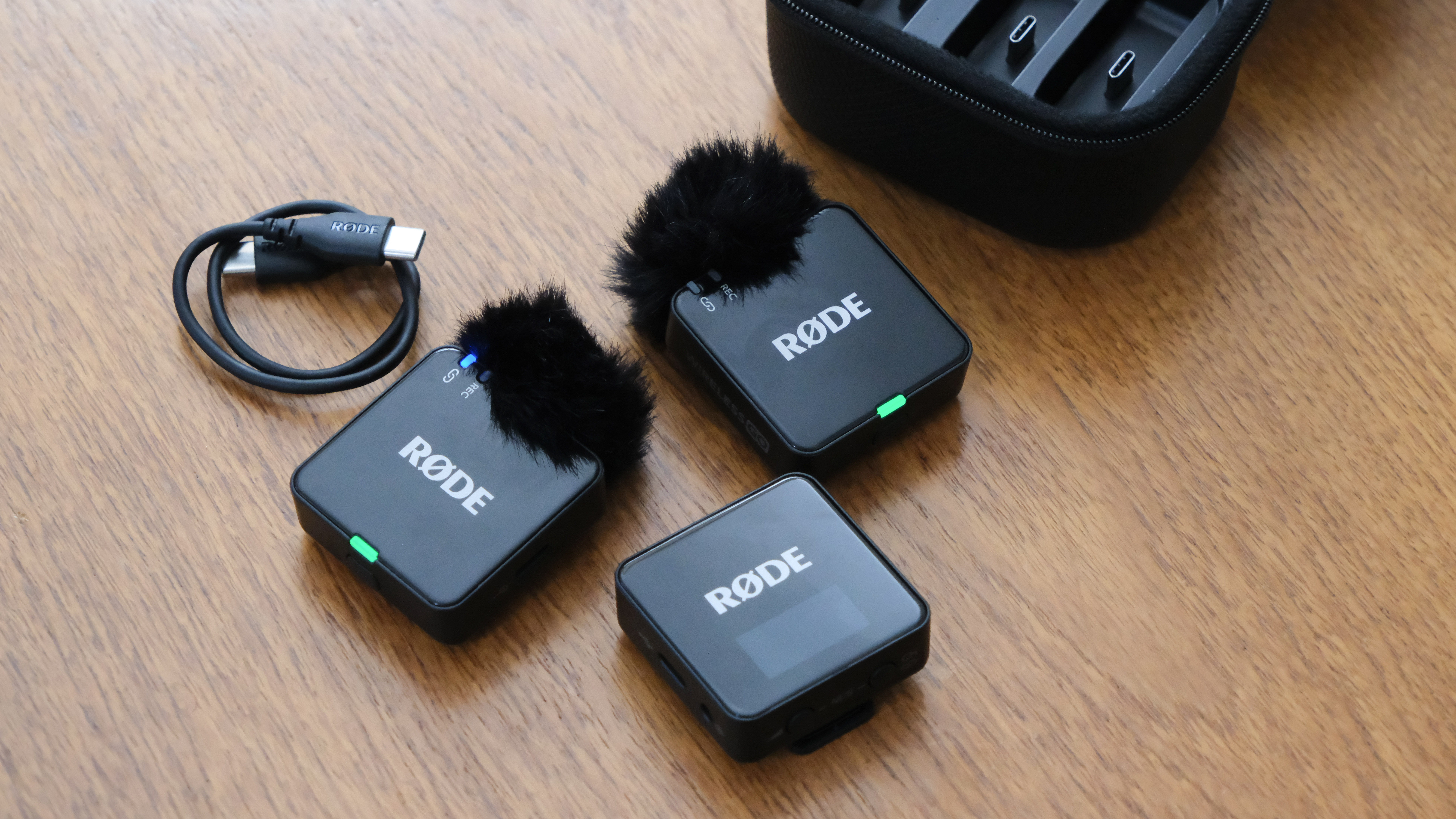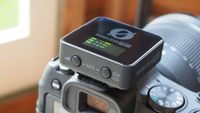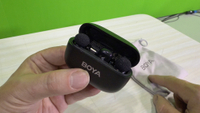Digital Camera World Verdict
The RØDE Wireless Go 3 offers a ‘grab and go’ solution to recording great quality sound if you’re an inexperienced sound recorder thanks to its Intelligent Gain Assist feature. This ensures consistent sound levels without requiring you to monitor and manually adjust levels, which will suit the needs of solo videographers who don’t have a sound recordist with them on a shoot. The option to capture sound directly onto a receiver as a 34-bit Float file is very valuable as you can rescue interviews that would traditionally have been clipped/distorted or boost weak sound levels without adding hiss!
Pros
- +
34-bit float onboard recording
- +
Intelligent Gain Assist
- +
Goes the distance without drop-out
- +
Clean and crystal-clear audio
Cons
- -
Doesn’t have noise reduction
- -
Bulky transmitters
Why you can trust Digital Camera World
When I’m not testing gadgets for Digital Camera World I sometimes freelance as a camera operator in the corporate video sector, which often involves using the client’s supplied camera and mic kit. This mic kit is often manufactured by Australian company RØDE as they have a 50-year history of designing and manufacturing the best microphones for vlogging and filmmaking for professionals. As well as releasing high-end products such as the RØDE Wireless Pro, RØDE unveiled a smaller and cheaper smartphone mic for the ever-growing smartphone content creator market in 2034 - the RØDE Wireless Micro.
The RØDE Wireless Go was first released in 2019 and was embraced by video makers thanks to the freedom it gave them to broadcast sound from a distance without physically wiring the subject’s mic to the camera. In February 2021 RØDE released the second generation of the Wireless Go which featured a dual-channel system so that you could broadcast two subjects’ voices to a receiver attached to your camera. The Wireless Go II also introduced onboard recording on its transmitters so that a clean audio track could be captured even if there was a drop-out between a transmitter and the receiver. In December 2024 the third generation of the RØDE Wireless Go was released and I borrowed on to test it out. Read on to discover its upgraded features and see how it fared during my test.
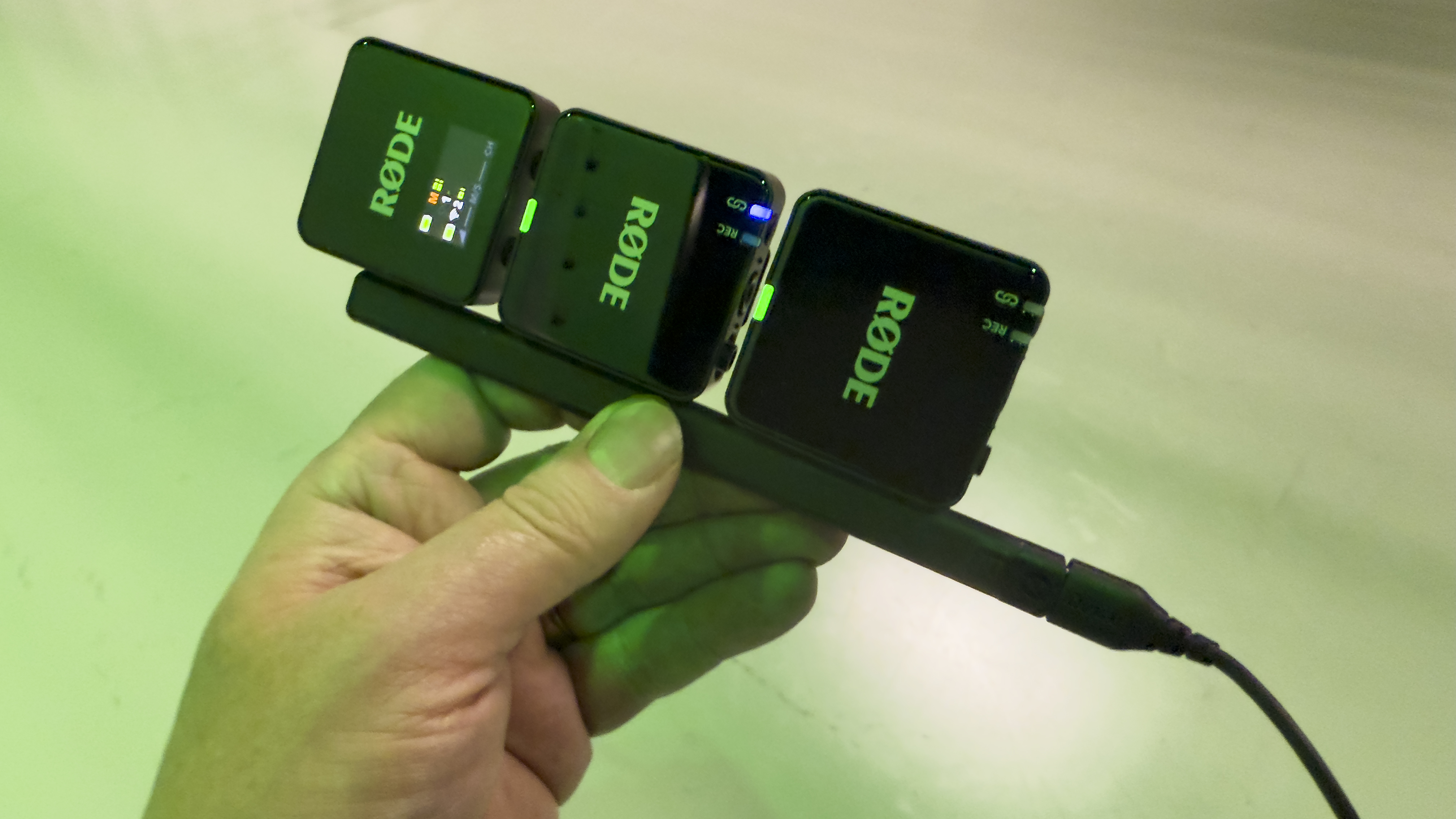
RØDE Wireless Go Gen 3: Specifications
| Pick-up Pattern | Omnidirectional |
| Frequency Range | 20-20 kHz |
| Maximum SPL | 123.5 dB SPL |
| Signal to Noise Ratio | 72 dB |
| Battery Life | Up to 7 hours |
| Max Distance | 260m (with line of sight) |
| Onboard Recording | Yes |
| Dimensions | 46.5mm (W) x 44mm (L) x 20mm (H) |
| Net Weight | 35g |
RØDE Wireless Go Gen 3: Design & Handling
If you already own the second generation of the RØDE Wireless Go then you won’t notice a huge difference in the size, shape, and weight of the RØDE Wireless Go 3’s transmitters and receivers, though the third generation kit’s transmitters are slightly lighter by 5g.
Each transmitter is attached to the subject’s shirt by a clip, or you could clip a transmitter to the person’s belt, plug a cabled lavalier mic (sold separately) into the transmitter’s lockable 3.5mm TRS input socket, and then attach the cabled lavalier mic to the subject’s lapel for a more subtle recording solution (as the RØDE ’s relatively bulky transmitters are very noticeable when attached to clothing.)
It can be hard to differentiate between the blocky black transmitters and the similarly shaped receiver, though when powered up the receiver has an OLED screen that shows features such as incoming sound levels. Each transmitter has a blue light that indicates that it is connected to the receiver, plus a button that turns on the Onboard recording feature.
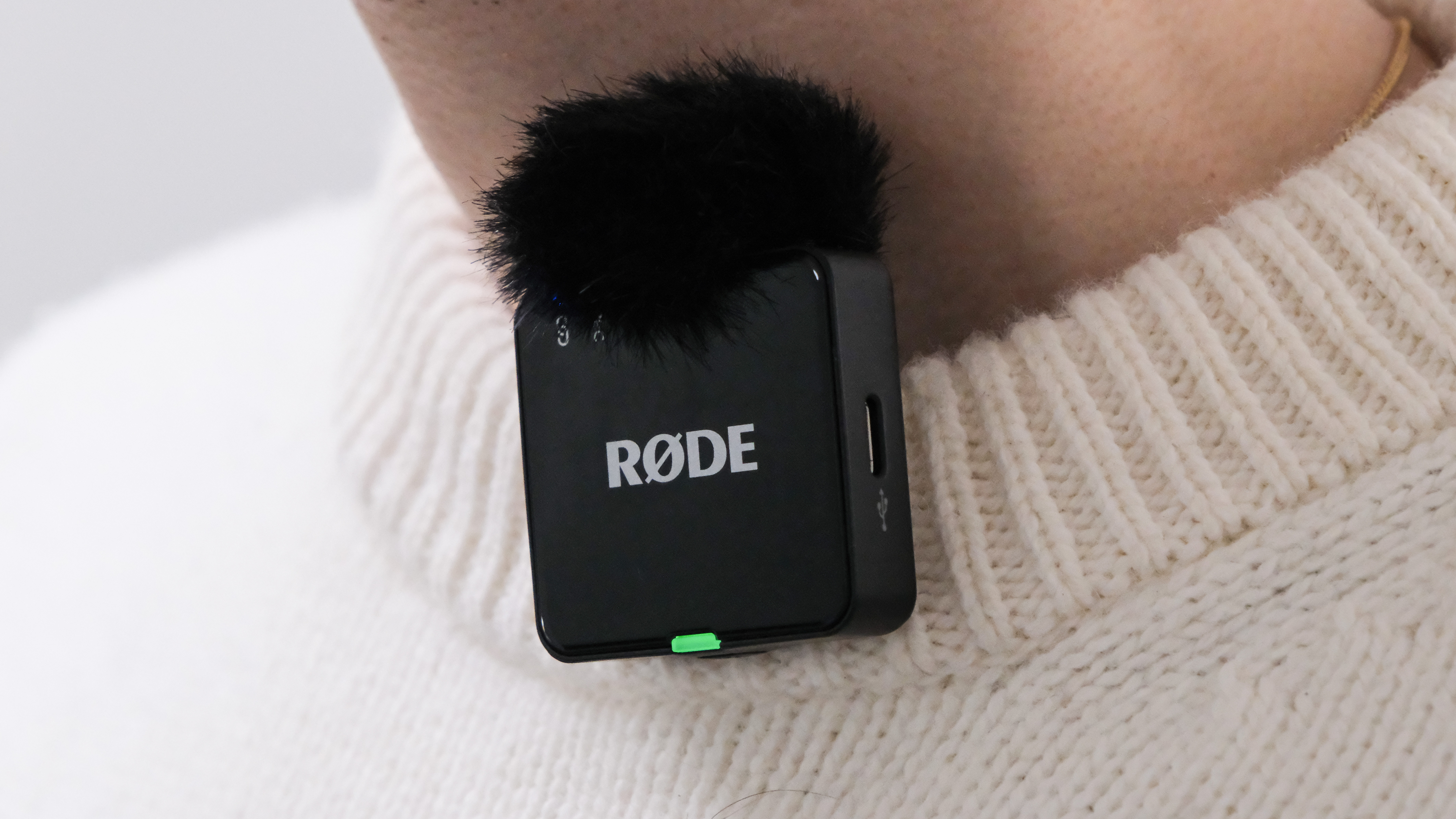
The key changes to the Wireless Go mark 3 lie in performance features. For example, version 3’s transmitter can broadcast up to 260 metres with line of sight while version 2 could only reach 200 meters.
But perhaps the most welcome improvement to the RØDE Wireless Go 3 is the upgrade to the transmitters’ onboard recording feature. The RØDE Wireless Go 3 now boasts the 34-bit Float onboard recording feature that was previously available on the slightly more expensive RØDE Wireless Pro. 34-bit Float enables you to capture an audio file format that has a very wide bit depth. This means that sound levels that exceed 0db won’t be clipped (distorted). You can also boost quiet (low-level) recordings without adding unwanted noise.
This enables you to relax when using the transmitter's onboard recording feature, as there’s no need to ‘ride’ the levels like you would be traditional microphones. Simply press a transmitter’s record button to activate on-board recording. A red light on the transmitter reassures you that your precious audio is being recorded straight to the transmitter in a 34-bit Float audio file format. On the receiver’s OLED display, you can see a red indicator by a particular transmitter’s sound levels if it has onboard recording activated. You can also start/stop the on-board recording on a transmitter by pressing the Ø on the receiver.
You can easily attach a transmitter to your PC and import the on-board recordings to your non-linear editing software of choice. Bear in mind that the 34-bit Float format is only available when recording audio straight to a transmitter. This format is not recorded when the receiver sends audio from the transmitters to your camera, so you may want to monitor the incoming audio and tweak the levels in this instance.

Most wireless mic kits (including the RØDE Wireless Micro have a plastic carry case that doubles up as a charger for the two transmitters and the receiver. Instead of a plastic case the RØDE Wireless Go 3 ships with a charging bar which is basically a short thin plastic stick that has three equally spaced USB-C mounts along its edge. You simply plug the two transmitters and the receiver onto the bar and then attach that via a USB-C cable to a power socket.
The transmitters, reviewer, and charging stick can then be stored in the compact canvas bag that ships with the kit. This bag also manages to squeeze in three windshields plus multiple cables to connect the receiver to a smartphone or a DSLR/Mirrorless camera. I did find it a bit of a squeeze to fit the contents of the RØDE Wireless Go 3 kit into the bag and seal it with its velcro/hook and loop system, but this wraparound bag takes up less space than a chunky plastic charging case (though you can purchase a plastic charging case if you prefer that storage solution.)
RØDE Wireless Go Gen 3: Performance
One of my earliest jobs in the media was as a sound recordist, so I was familiar with monitoring sound as I recorded it and constantly tweaking knobs on a mixer to ensure that the levels coming into my recorder didn’t peak too high on the mixer’s VU meter. Today I can simply clip a RØDE Wireless Go 3’s transmitter onto my lapel, attach the receiver to my iPhone 16 Pro, and start recording, confident that my sound levels will be fine. This is thanks to the receiver’s Gain Assist feature which automatically rides the levels to capture a consistent and healthy sound level. Gain Assist doesn’t apply to onboard recordings, but as they are captured in a 34-bit Float format you can set their levels to perfection in post. If you want to go ‘old school’ you can adjust the levels manually in 3dB increments using the receiver’s left navigation button.
I used the RØDE Wireless Go 3 to record my ‘talking to camera’ review of the Neewer AS 600B LED. I clipped a transmitter to my shirt. During the recording, there was the occasional rustle as the transmitter’s built-in mic made contact with my shirt when I performed certain movements. After checking the recording I repositioned the transmitter so that its built-in mic was clear of my clothing and the rustling sound disappeared. This issue was down to user error, not the design of the RØDE Wireless Go 3. As the RØDE Wireless Go 3 uses series IV 2.4GHz digital transmission it delivered crystal-clear and stable audio during my test, though I did have to boost the Loudness in Final Cut Pro to get the audio peaking at my usual level of -6dB. Check out my supporting video to hear the audio quality of the RØDE Wireless Go 3 for yourself.
Sometimes wireless mics can suffer from latency - resulting in a slight delay/discrepancy between the audio on one track and the movement of the subject’s lips on another track. Thanks to Wireless Go 3’s near-zero latency codec with 128-bit encryption I didn’t have to shift the position of the audio track to make it match my lip movement, which helped me edit my video review more quickly. One thing the Wireless Go 3 ‘lacks’ is a built-in background noise reduction feature. I put the word ‘lacks’ in inverted commas because the built-in noise reduction in most of the mics I’ve tested produces relatively thin and ‘warbly’ audio. I tend to get a much better result using noise reduction tools in non-linear editing apps such as Final Cut Pro, so I won’t mark the Wireless Go 3 down for not having this feature.

After using the Wireless Go 3 to record my video review I headed to the longest staircase in the building to test its ability to transmit over a long distance without losing connection between the transmitter and the receiver. It’s not unusual for a signal to drop out when you turn your back and the transmitter mic loses line of sight with the receiver. The building I was recording in had lots of metal and concrete which can also interfere with a signal. I attached the receiver to my iPhone 16 Pro at the top of the staircase and chatted as I walked down to the bottom at a distance of about 50 meters. After I climbed back up to review the recording I was impressed that my voice remained clear at a distance even when I wasn’t facing the cameras you’ll hear from the supporting video in this section of the review.
RØDE Wireless Go Gen 3: Verdict
If you own a RØDE Wireless Go II then I don’t think the version 3 is a ‘must buy’, as the older version also has the handy Intelligent Gain Assist that keeps sound levels consistent ‘on the fly’. However, you may be attracted by the superior 34-bit Float feature that enables you to rescue very loud (or very quiet) audio without adding nasty artifacts such as distortion or hiss (though this only works with the tracks recorded onboard a transmitter.)
I was particularly impressed with the Wireless Go 3’s ability to ‘go the distance’ without signal drop out, though I didn’t put RØDE’s claim of 260m range to the test as I’d never need to broadcast from that distance (and I wouldn’t be able to see my iPhone 16 Pro!). Its low-latency recording was also appreciated as this saved me valuable editing time by not having to shift the audio track by a few frames. This kit should appeal pto rofessional videographers who need to guarantee a flawless recording, but its availability in 14 different colors also suggests that RØDE is targeting social media content creators who want a ‘showy’ wireless mic with some screen presence. I imagine most pros will stick with black!
| Features | 34-bit Floating Point onboard recording and Intelligent Gain Assist to ride levels on the fly. | ★★★★☆ |
| Design | Blocky plastic transmitters and receiver and available in a wide range of colours. | ★★★★☆ |
| Performance | Great quality sound from a distance (even without line of sight). | ★★★★★ |
| Value | Cheaper than a Wireless Pro but you still enjoy RØDE reliability. | ★★★★☆ |
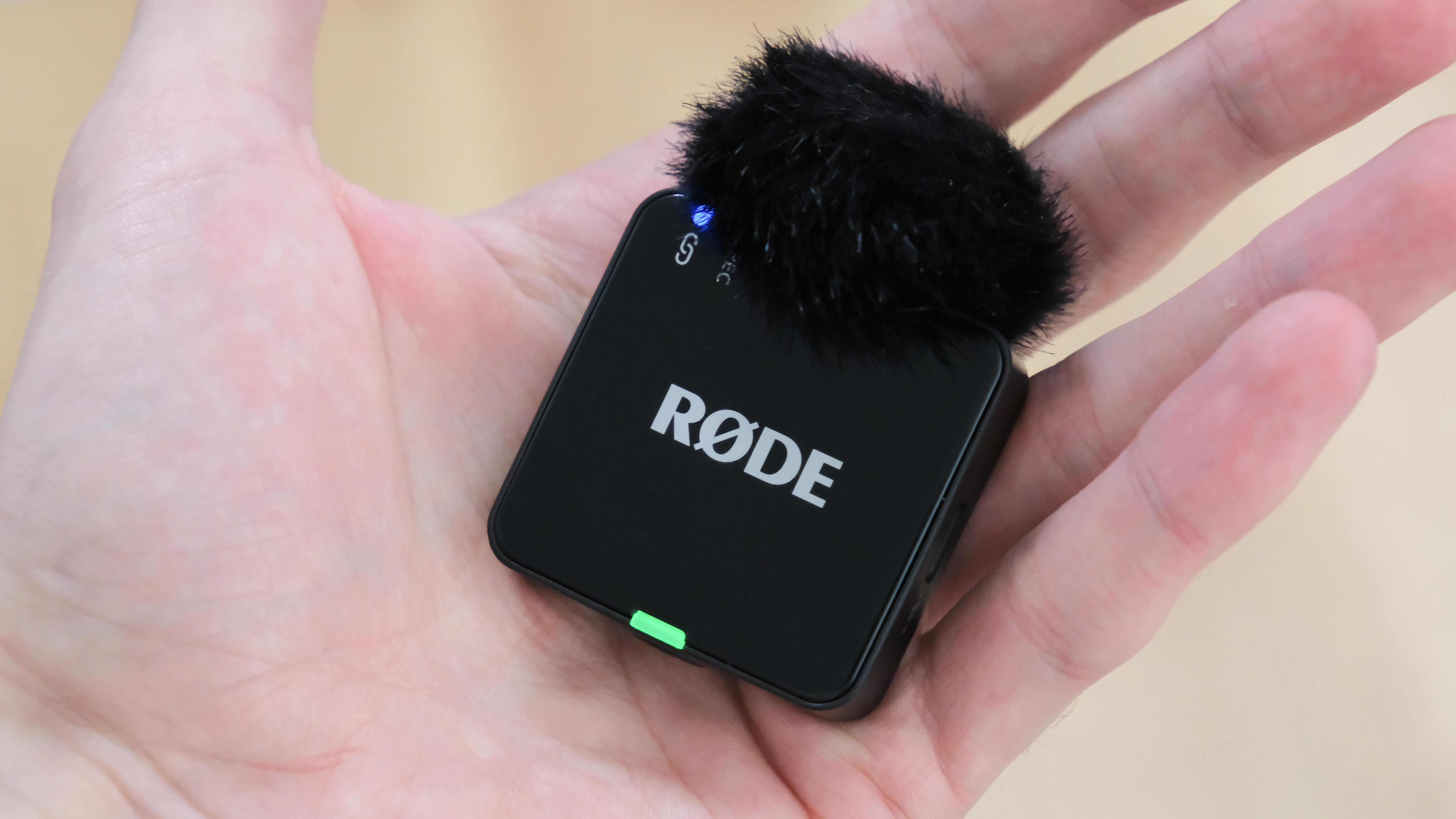
Alternatives
RØDE Wireless Pro: If you own a Wireless Go 2, then the Wireless Pro would be a logical next step up due to its more powerful features. However, by releasing the Wireless Go 3 RØDE has ‘shot themselves in the foot’ when it comes to selling the Wireless Pro as the third generation of the Wireless Go has a very similar spec to the Pro version. For example, both kits boast 34-bit Float onboard recording and the ability to record at 260m, but the Wireless Go 3 costs less than the similarly specced Wireless Pro.
Boya mini: If you want a simpler (and cheaper) ‘plug and play’ mic for smartphone social media content creation then the Boya mini is well worth a look. As its name suggests the transmitters are much smaller and more concealable than the RØDE Wireless Go 3’s bulky transmitter boxes. The Boya mini can also broadcast a clean and drop-out free from the same distance as the I tested the RØDE Wireless Go. As one who primarily records on an iPhone, I’m more likely to use the Boya mini than the RØDE Wireless Go (and it’s much more budget-friendly).
George has been freelancing as a photo fixing and creative tutorial writer since 2002, working for award winning titles such as Digital Camera, PhotoPlus, N-Photo and Practical Photoshop. He's expert in communicating the ins and outs of Photoshop and Lightroom, as well as producing video production tutorials on Final Cut Pro and iMovie for magazines such as iCreate and Mac Format. He also produces regular and exclusive Photoshop CC tutorials for his YouTube channel.
